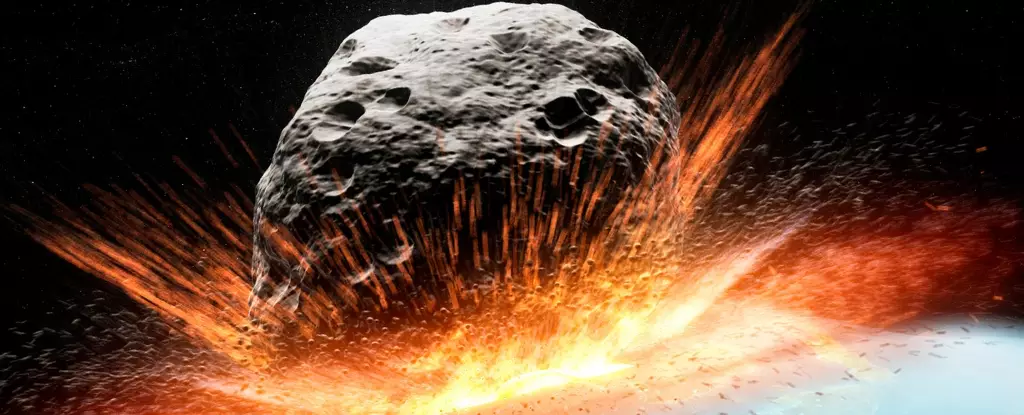At the end of December 2024, astronomers captured the attention of the scientific community by detecting an intriguing asteroid designated as 2024 YR4. The naming convention signifies that this celestial body is the 117th asteroid discovered in the latter half of December of that year. With the ever-increasing prowess of astronomical technology, tracking and measuring the positions of such asteroids have become crucial for predicting their potential threat to Earth. Early assessments placed YR4’s risk of collision at a mere 1%, but as data continued to accumulate, those odds escalated to 2.3%, sparking renewed interest and concern. Unlike the fictional narratives portrayed in movies like “Don’t Look Up,” this scenario illustrates the real-world challenges and uncertainties surrounding asteroid tracking.
The current 2.3% chance of asteroid 2024 YR4 impacting Earth on December 22, 2032, might seem alarmingly significant at first glance. However, it is essential to interpret this probability in a context that reflects the complexities inherent in orbital mechanics. Astronomers have utilized simulations to paint a clearer picture of this asteroid’s trajectory, indicating that in 1,000 simulations, approximately 23 resulted in a potential impact with Earth. Yet, the asteroid is estimated to approach Earth at a distance of 240,000 kilometers—a distance surpassing the Moon’s orbit and far from what could be considered reckless proximity.
The early stages of asteroid tracking are often filled with uncertainty, unlike the predictability of planetary bodies. Various factors can influence an asteroid’s trajectory, such as gravitational pulls from nearby celestial objects. For instance, asteroid 2024 YR4 is expected to make a close encounter with Earth in 2028, passing within approximately 8 million kilometers. This future close approach will provide astronomers with unprecedented opportunities to refine their calculations and forecasts. However, even with significant improvements in tracking accuracy, the unpredictability of orbital dynamics remains a steadfast challenge.
In the arena of space risk assessment, NASA’s Planetary Defense Coordination Office (PDCO) has been a pivotal player. With its risk classification remaining at a 3 on the Torino scale—both at 1% and now 2.3%—the PDCO continues to advocate for monitoring and studying YR4 without inciting unnecessary panic. This graded scale is crucial for public understanding, as it reflects the difference between a negligible threat and one warranting closer inspection. Importantly, the office’s continual monitoring ensures that predictive models are updated regularly, allowing for timely intervention if needed.
Though the prospect of a near-Earth object impact can conjure images of catastrophic destruction, understanding the specifics of asteroid 2024 YR4 is vital. Even in a worst-case impact scenario, its size is not anticipated to be large enough to cause an extinction-level event. The real threat would arise only if it were to strike a densely populated area, necessitating evacuation and other contingency plans. Given the time frame of several years until 2032, there would be opportunities to devise potential deflection strategies, underscoring the importance of proactive measures.
As we navigate through the complexities of tracking asteroids like 2024 YR4, it is essential to have a nuanced understanding of the scientific principles and the inherent unpredictability involved. The journey from initial detection to risk assessment showcases human ingenuity and the importance of readiness. Whether odds rise or fall in the future, what remains clear is our ability to monitor these celestial bodies and adjust our responses appropriately. For those interested in keeping up with the latest findings, NASA’s Planetary Defense Page serves as a valuable resource for tracking the trajectory and potential impact of asteroid 2024 YR4. With careful vigilance and continued advancements in space technology, humanity is equipped to address the challenges posed by these cosmic entities.


Leave a Reply